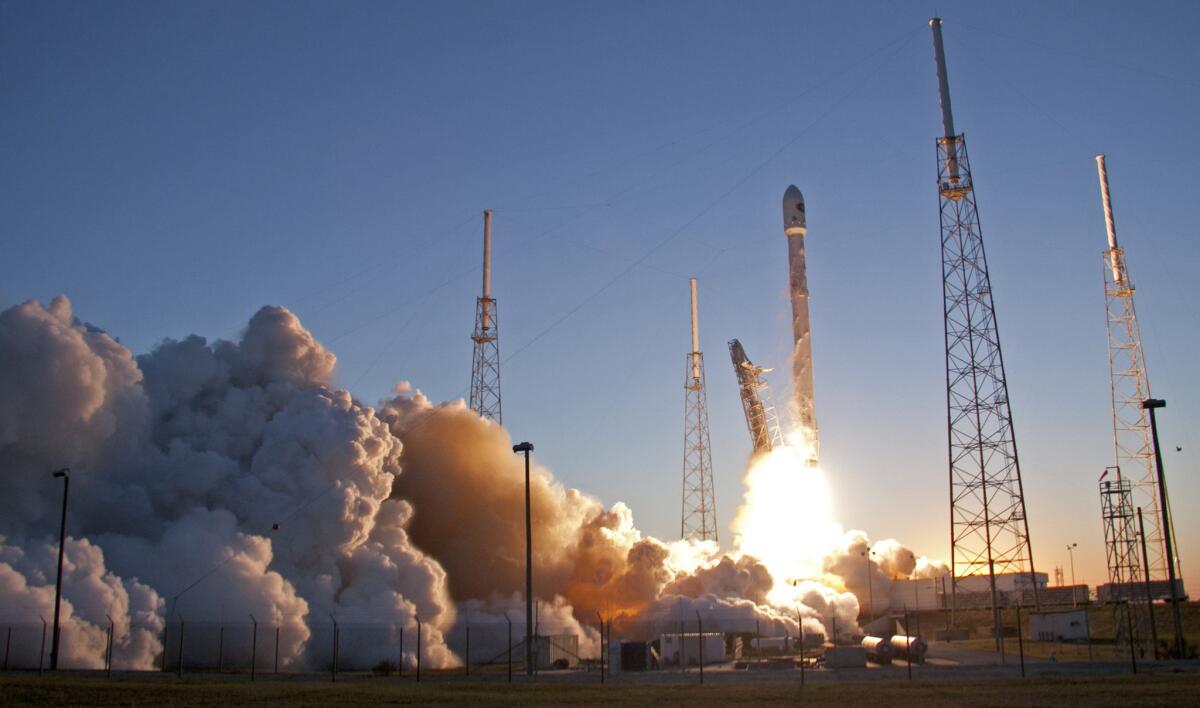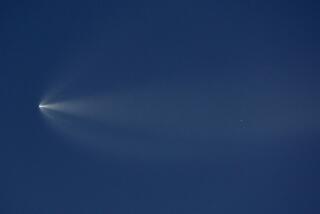SpaceX blasts satellite into orbit

Entrepreneur Elon Musk’s aerospace firm SpaceX blasted a government weather satellite into orbit Wednesday, but the company called off its much-anticipated attempt at landing its booster rocket on an ocean barge.
The Falcon 9 rocket carried a satellite that had been proposed 17 years ago by then-Vice President Al Gore. Its primary purpose is to provide early warning of solar storms that scientists say can disrupt power grids and potentially cause mass blackouts.
After two previous attempts to launch the satellite were scrubbed, the rocket blasted off at 3:03 p.m. Pacific time. The satellite, known as the Deep Space Climate Observatory or DSCOVER, headed into deep space.
Three hours before the liftoff from Cape Canaveral, SpaceX said that rough seas had forced it to cancel its attempt to land the rocket’s first stage booster on an unmanned barge — which it calls the droneship — stationed several hundred miles off Florida’s coast.
“The droneship was designed to operate in all but the most extreme weather,” the company said in a statement. “We are experiencing just such weather in the Atlantic with waves reaching up to three stories in height crashing over the decks.”
Also, only three of the ship’s four engines were working, the company said, making it difficult to manage the waves.
The landing attempt had gained widespread attention because of its potential to revolutionize space travel. Musk wants to recover the rocket’s first stage, which includes the nine engines that blasted it to space, and use it on future flights, a feat that could slash the cost.
The next launch by the Hawthorne company is scheduled for later this month.
Musk tweeted just before the launch: “Planning a significant upgrade of the droneship for future missions to handle literally anything.”
It was the first time SpaceX, short for Space Exploration Technologies Corp., had lofted a satellite into a deep-space orbit. The satellite is on its way to almost 1 million miles from Earth, a place where the gravitational pull from the planet and the sun cancel each other out, making it easier for a spacecraft to keep its position.
Besides the instrument that will forecast solar storms, the satellite has a camera that will take photos of the Earth’s entire sunlit face.
Gore proposed the space camera years ago, saying it could provide a live stream of cloud formations, dust storms, large fires and other phenomena. He touted the plan as a way to interest young people in science and the environment.
In 1999, however, congressional Republicans cut off the project’s funding, calling it unnecessary. Years later, the satellite was taken out of storage and the project was restarted, mostly because of its potential to give advance warning of solar storms, which are caused by bursts of high-energy particles from the sun.
Even though it nixed the barge landing Wednesday, SpaceX still attempted a soft water landing of the rocket after it separated from its payload. To do that, it restarts its engines to slow it down.
Musk tweeted after the launch that the soft ocean landing was a success and that the rocket came down “nicely vertical.”
“High probability of good droneship landing in non-stormy weather,” he wrote.
@melodypetersen







